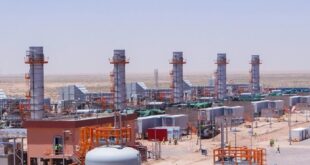Consulting firm IHS Markit expects oil demand in the second quarter of 2020 to be 22 MMbpd less than a year ago.
This collapse in demand combined with low oil prices, storage constraints and government ordered cuts are driving what is an extraordinary level of liquids production cuts and shut-ins around the world.
The Great Shut-In, a rapid and brutal adjustment of global oil supply to a lower level of demand is underway. All producing countries are subject to the same brutal market forces. Some will be impacted more than others. But there is nowhere to hide, said Jim Burkhard, vice president and head of oil markets at IHS Markit.
North America and OPEC members, as well as countries in the Commonwealth of Independent States—particularly Russia—are expected to be the source of most of the production cuts.
Exactly where, why and how supply cuts will take place is a complex matter. There is no fixed equation. Oil is produced in a wide variety of environments, which means there is no fixed equation and decision factors vary.
When it comes to the where, why and how of production cuts, the wide range of technical, logistical, regulatory, contractual, and financial conditions means there is no single set of answers. But under these market conditions, it is pretty clear where production will be cut. Nearly everywhere, said Paul Markwell, vice president, global upstream oil and gas at IHS Markit.
IHS Markit has identified three key factors that shape production cut decisions:
Technical and logistical factors—including restart complexity. Technical factors relate to the degree of operational complexity such as terrain, field depletion, reservoir drive, production system configuration and reservoir fluid composition. Complexity and field maturity influence how easy or difficult restarting production could be, including whether output could be forever lost or simply deferred. Other technical-related factors are health, safety, and worker availability. Logistical factors are offtake demand, transport options, and oil storage availability.
Financial considerations. These include operating margins, current oil price levels, future expectations of the oil price, financial health of the operator, capital availability and alternative spending options—such as deciding to spend money on other projects.
Regulatory and contractual conditions. These include ensuring compliance with government requirements for shutting-in wells, government orders to adjust production, and contractual obligations. Government orders to comply with the OPEC+ agreement to cut production fall into this category. Obligation to deliver associated gas (i.e. gas that is produced as byproduct from a crude oil well) is an example of a contractual condition that could impact production decisions. For upstream operations that are integrated with downstream assets—such as refineries and petrochemical facilities—downstream market conditions and needs of downstream assets could impact decisions about upstream output, especially when the assets are under combined ownership.
 Iran Energy News Oil, Gas, Petrochemical and Energy Field Specialized Channel
Iran Energy News Oil, Gas, Petrochemical and Energy Field Specialized Channel




